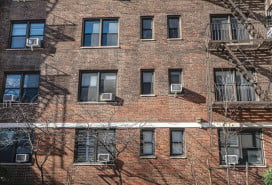Ask an Expert: How many rentals is too many?

Q. Should co-ops and condos limit the number of rentals to a certain percentage? Is there some “magic” number? I’ve heard 20-30% to balance encouraging investment while also maintaining quality.
A. Perhaps more important than encouraging investment is ensuring that banks will continue to finance mortgages in your building, observe some of BrickUnderground's experts.
In the current tight lending environment, banks prefer that fewer than 20 to 30 percent of the apartments are being rented out, says mortgage broker Kira Silverman. Moreover, she says, banks shy away from making loans in buildings where a single investor owns more than 10% of the units.
Where exactly your building should fall in (or outside) that range depends—it’s a “complex equation,” notes real estate sales director Roberta Axelrod.
Variables include the number of units in the building, the type of building—new, old, condo or co-op—and the mix of tenancies, says real estate lawyer Dean M. Roberts, noting that some tenants might be leftover rent-regulated tenants in sponsor units.
“If the building is well run and has solid finances," says Roberts, "the rental number is usually not much of an issue. However, if there is a large mortgage or financial issues, then the rental units have much more of an effect.”
There are some other reasons to be conservative when it comes to the percentage of rentals.
A lot of rentals can “make a buyer wary that the whole building will be more like a rental, and the implication for many is that the building will be less cared for,” says real estate broker Deanna Kory.
Indeed, says property manager Thomas Usztoke, whether you intend to “maintain quality or encourage investment, too many non-owner occupied apartments adds negatively.”
Even though many boards are at least temporarily relaxing their sublet policies in a challenging sales environment, they “believe that subtenants often do not have the same community interest at heart as most owners,” says real estate lawyer Eric Goidel.
Another wrinkle, says Roberts, is that many buildings have difficulty reaching a quorum for annual meetings, especially when there a large number of renters.
Co-ops may need to be more conservative than condos about the number of rentals they allow.
Most underlying co-op mortgages "have a requirement for the maximum numbers of investor units, so co-ops should check with their underlying mortgage holders so they are not in violation of their mortgage," says Silverman
Real estate broker Kathy Braddock argues co-ops should exercise restraint for another reason.
“The nature of a co-op is that you buy it, live in it, and sell it….Condos on the other hand are designed to sublet,” she says. But even in a condo, she says, “there should be a minimum amount of months—most buildings say that you must rent for at least a year. That way you do not turn the building into a B&B.”
Trouble at home? Get your NYC apartment-dweller questions answered by an expert! Send us your questions.

























